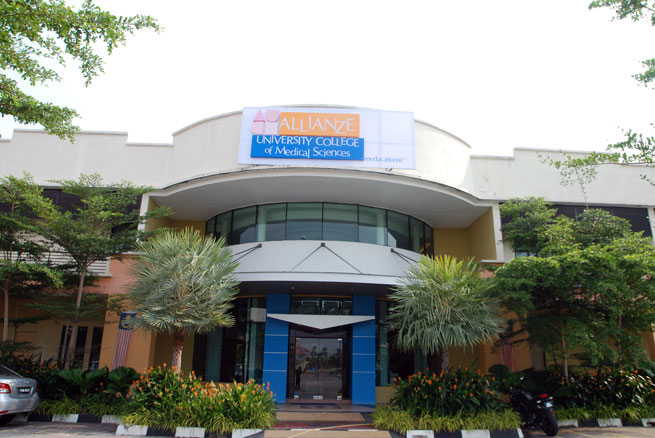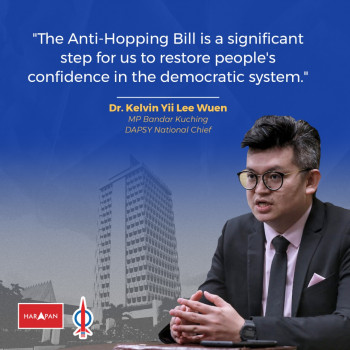
A hidden crisis is brewing among private higher learning institutions and urgent action is needed, says Dr Ong Kian Ming
Very often, the spotlight in the media is on public higher education institutions — from rankings of our public universities to the dismal state of unemployment of its graduates, it is only justified that public institutions are of great concern to Malaysians.
Yet there is a hidden crisis bubbling beneath the surface, one that very little attention is paid to: some private universities are facing dire financial problems, and its affecting their ability to provide world-class education.
Penang-based think tank, Penang Institute in its latest study has revealed the hidden money woes on private higher education institutions (PHEIs) across the nation — stripping away the advertisements, the marketing and the branding to analyse how the financial management of some of these universities have suffered over the years.
More than 40% of private higher education institutions surveyed made losses
The study, first of all, analysed the annual financial statements of more than 70 PHEIs — and the figures aren’t pretty.
Penang Institute general manager Dr Ong Kiang Ming in a forum recently said around 46% of all universities and 43% of all PHEIs made losses before tax in 2013.
“These numbers rise to 50% and 46% respectively when profits after tax figures are used. While the overall state of PHEIs show that they are in positive financial health, the situation is different when the distribution of these fingers are examined, the state of the financial health of many of these PHEIs are called into question,” Ong said.
Other findings included:
>> Approximately 46% of these private PHEIs have insufficient assets to cover their current liabilities.
The researchers found that more than 70% of the PHEIs are unable to hold twice as many current assets that they need to protect against risk; and 64% have debts which exceed their paid-up capital. These financially distressed PHEIs have as many as 120,000 students.
>> As the National Higher Education Fund (PTPTN) cuts its funding to PHEIs, so will the institutions find itself losing revenue.
“We know that the amount of PTPTN loans per student were cut by 5% for public universities and 15% for private universities in November 2014. PTPTN loans account for around 70% of the income of private HLIs. When the researchers projected a 15% cut in 70% of the revenue (which translates into a 10.5% cut in overall revenue), it was found that approximately 70% of private HLIs would be making losses. The number of students in these affected private HLIs would increase from 120,000 to 215,000,” said Ong.
Urging the government to pay closer attention to save the PHEI industry, Ong said as many as 86% of PHEIs are unable to generate a profit for several reasons, the chief of which boils down to poor management of these universities as a commercial enterprise.
“One of the possible reasons put forth by the researchers is that the Vice-Chancellors of these
universities – half of whom are in their 60s and are mostly male – do not have enough commercial
experience to run these universities in a profitable manner. Many of the vice-chancellors and deputy vice-chancellors are brought in from the public sector where budgets which are allocated by the Ministry of Education have to be spent as part of their respective key performance indicators,” he said.
However, Ong said, this does not translate well when running a private university.
“In the private sector, budgets have to be justified vis-à-vis the revenue which is brought in via student enrolment which is getting more and more competitive as the number of PHEIs grow,” he said.
One other reason could simply be that many VCs are foreigners and are simply not well-prepared to manage a PHEI in a profitable manner.
“Another possible reason given is that VCs who are foreigners may not have such a clear understanding of the local private higher education sector and thus, less likely to be able to manage PHEIs in a profitable manner. To back up this argument, the researchers found that 78% of PHEIs run by foreigners are in some form of financial distress,” Ong pointed out.
Growing market, growing problem
The seriousness of this study cannot be underestimated.
The PHEI industry is growing exponentially, to the extent that the recently-released National Education Blueprint projected the growth of PHEIs at 455,000 students in 2012 to 800,000 students in 2025 with an annual increase of 5%.
It is not impossible that come 2025, the number of students enrolled in private higher education would outstrip those in public universities — especially since the public institutions continue to be dogged by poor performances in world university rankings.
Public institutions also certainly do not benefit from the constant interference from the government, which in turn forces the university management to self-censor and stifle open and intelligent discourse.
This is evidenced when Universiti Malaya (UM) forced UMcedel (the UM’s research and polls department) chief Professor Dr Mohammad Redzuan Othman to resign when he dared to release polls that were less-than-favourable to the government.
Students in public institutions also find themselves barred from freedom of expression by the University and University Colleges Act (UUCA), and many a time, talks and forums featuring opposition leaders were banned from campus.
Private universities, on the other hand, are seen as better — both in quality and freedom.
However, this study dispels the myth that all private colleges and universities are profit-making, and thus, of a better quality.
In a previous press release on the study, Ong said Malaysian private varsities also perform poorly in local and national ratings according to publicly available data the research shows. Only 51% were rated “Excellent” in the last SETARA ’13 rating exercise conducted by the MOE compared to 81% of public universities. Around 16% were rated as “Good” and one third of private varsities had no rating at all.
In terms of research, only one private varsity, Universiti Teknologi Petronas (UTP), received 5-Star rating in the MyRA ’11 rating by the MOE. Around 78% had no rating at all.
International ratings are also poor with only five private varsities appearing in the QS-Asia ranking in 2014 with the top rated UTP coming in the 191-200 range.
The root cause of this is due to poor management, and the study also found that there are a smaller percentage of academics with PhD qualifications in the PHEIs, compared to public universities.
“The percentage of academics with PhD qualifications in the PHEIs are only 13.3% in 2013, compared to public universities at 36.4% in the same year. Additionally, 10.5% of academics in PHEIs had below a Bachelors level qualification,” Ong said.
This, he explained, could mean that lower qualifications are associated with lower salaries, part-time appointments, short-term contracts, as well as low levels of research in the PHEIs.
Urgent action needed for future of education sector
Ong said he hopes the government will take the findings of this research seriously, although no Education Ministry representative had been present at the forum.
“We hope Ministers for Education I and II – Muhyiddin Yassin and Idris Jusoh – as well as the senior officials in the Ministry of Education can take these research findings seriously and consider implementing some of the recommendations put forward.
“If the problems faced by the private HLIs are not addressed, they could build up to a crisis that would affect hundreds of thousands of students. The warning signs are already here. The Allianz University College of Medical Sciences closed at the end of 2014 with a reallocation of more than 2000 students and loss of around 500 staff,” Ong warned.
“Al-Bukari International University, had announced in January 2014 that it would close in June 2014 with arrangements to reallocate around 600 students to other institutions. This was later withdrawn and a new collaboration model was announced.
“However, Masterskill Education Group Berhad, owner of Asia Metropolitan University, saw its share price fall from RM4.24 in August 2010 to a low of RM0.30 in May 2014 and RM0.68 in April 2015. Changes in shareholders and management have been announced recently,” he added.




